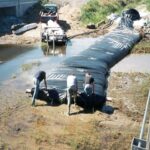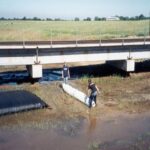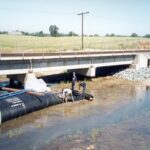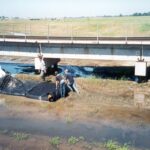
In Lincoln, California, a 4ft tall AquaDam cofferdam system was used to temporarily divert a small creek through an irrigation channel.

A 4ft tall, 9ft wide, 150ft long single closed-end (SCE) AquaDam, equipped with a connection collar, was deployed from the starting bank. To properly install an SCE AquaDam, the starting bank must be at a higher elevation than the dam’s full height to keep the open end and fill-tubes elevated above the dam’s maximum height along its path. The AquaDam reaches its full height only at the lowest point of the path. Discharge hoses were inserted into the fill-tubes, ensuring they extended beyond the black outer sleeve at the open end. The fill-tubes, made of clear material, are used to fill the AquaDam with water.

The AquaDam’s rolled end is securely held to prevent premature unrolling. As water fills the fill-tubes, internal pressure gradually forces the roll to unroll. Workers maintain a firm grip on the roll until sufficient head is built in the dam’s body, ensuring that additional length can be safely released without lowering the dam’s height below the upstream water depth.

Maintaining a water head inside the AquaDam that exceeds the upstream pooling water depth is crucial. Without this sufficient head, the force of the upstream water will overcome the AquaDam's stability and push it downstream. The falling water at the downstream end creates a significant pressure differential across the AquaDam, a force that must be continuously counteracted throughout the installation process to ensure stability.

The first 4ft tall SCE AquaDam has been fully unrolled but is not yet filled with water. Two 3in water pumps were used for the filling process. Installation has taken 30 minutes so far. The next 4ft tall SCE AquaDam, visible in white on the ground next to the pickup truck, is ready for installation.
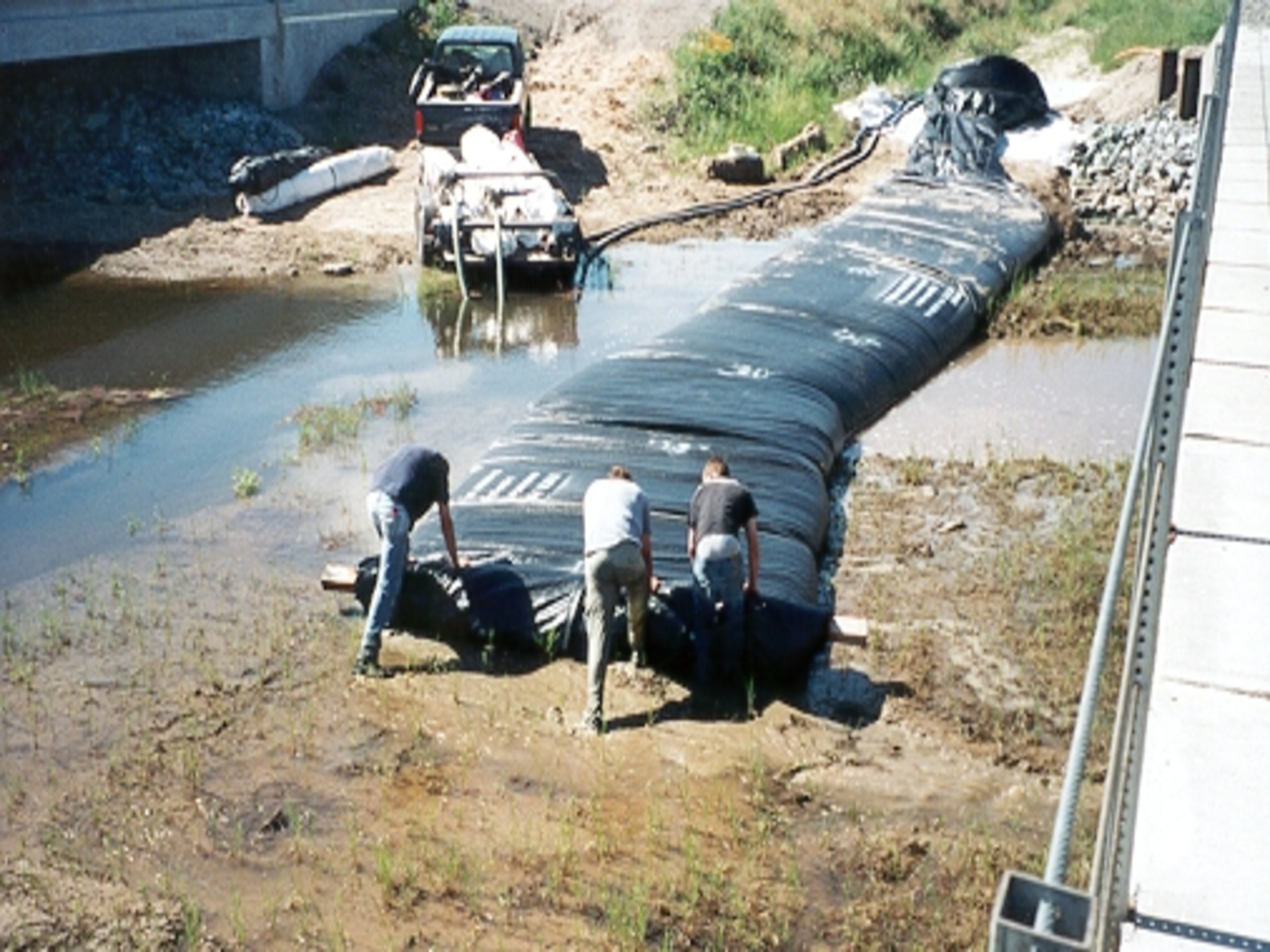
Workers secure the connection collar and the wooden beam the AquaDam was rolled onto, while it continues to fill with water.
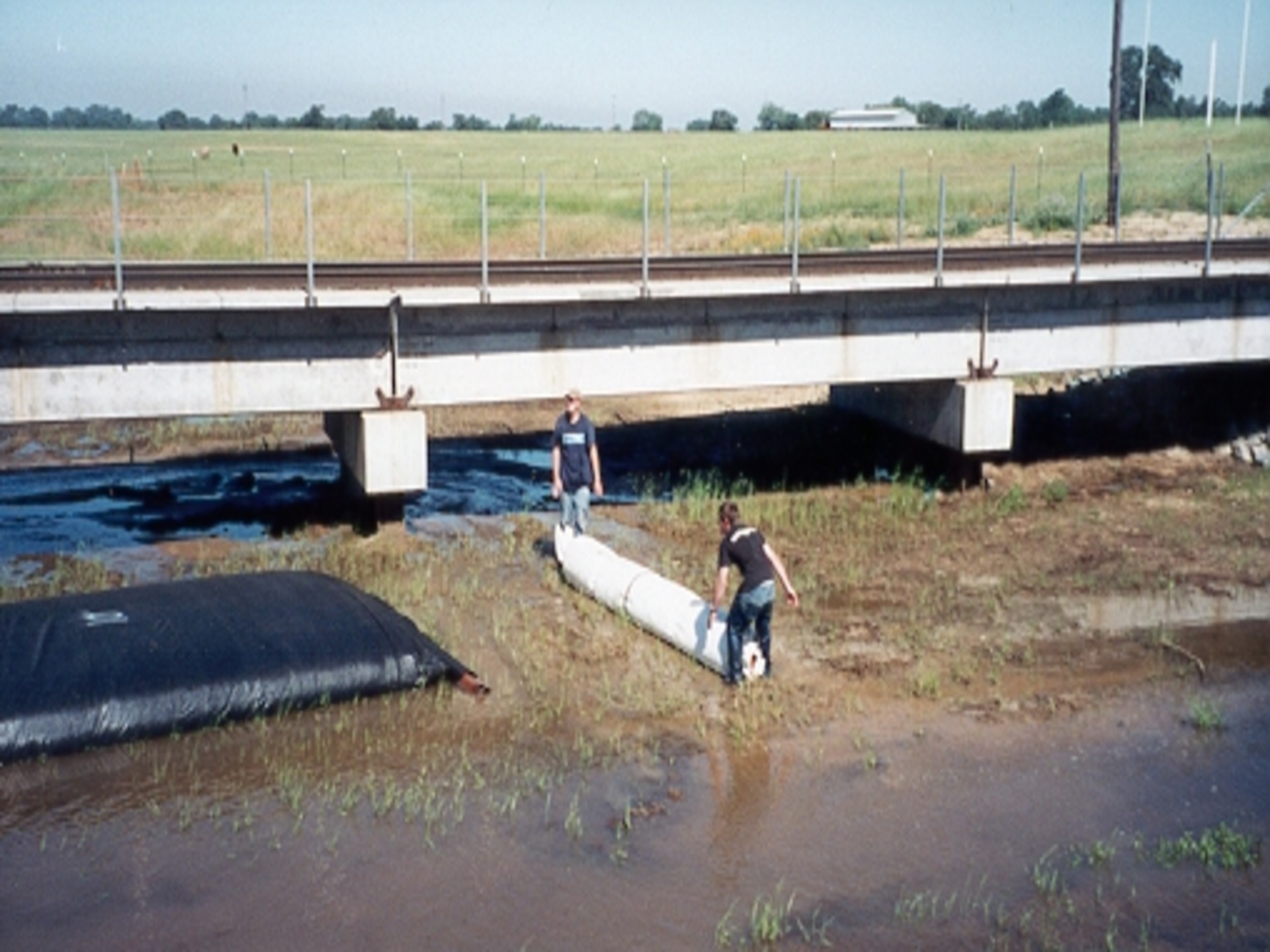
The second 4ft tall SCE AquaDam has been positioned directly behind the first, and its white protective wrapper will soon be removed. The connection collar of the first AquaDam remains rolled onto its wooden beam. AquaDams are shipped rolled up like carpet on a wooden beam, wrapped in a protective covering, and equipped with lifting ropes or straps for handling.
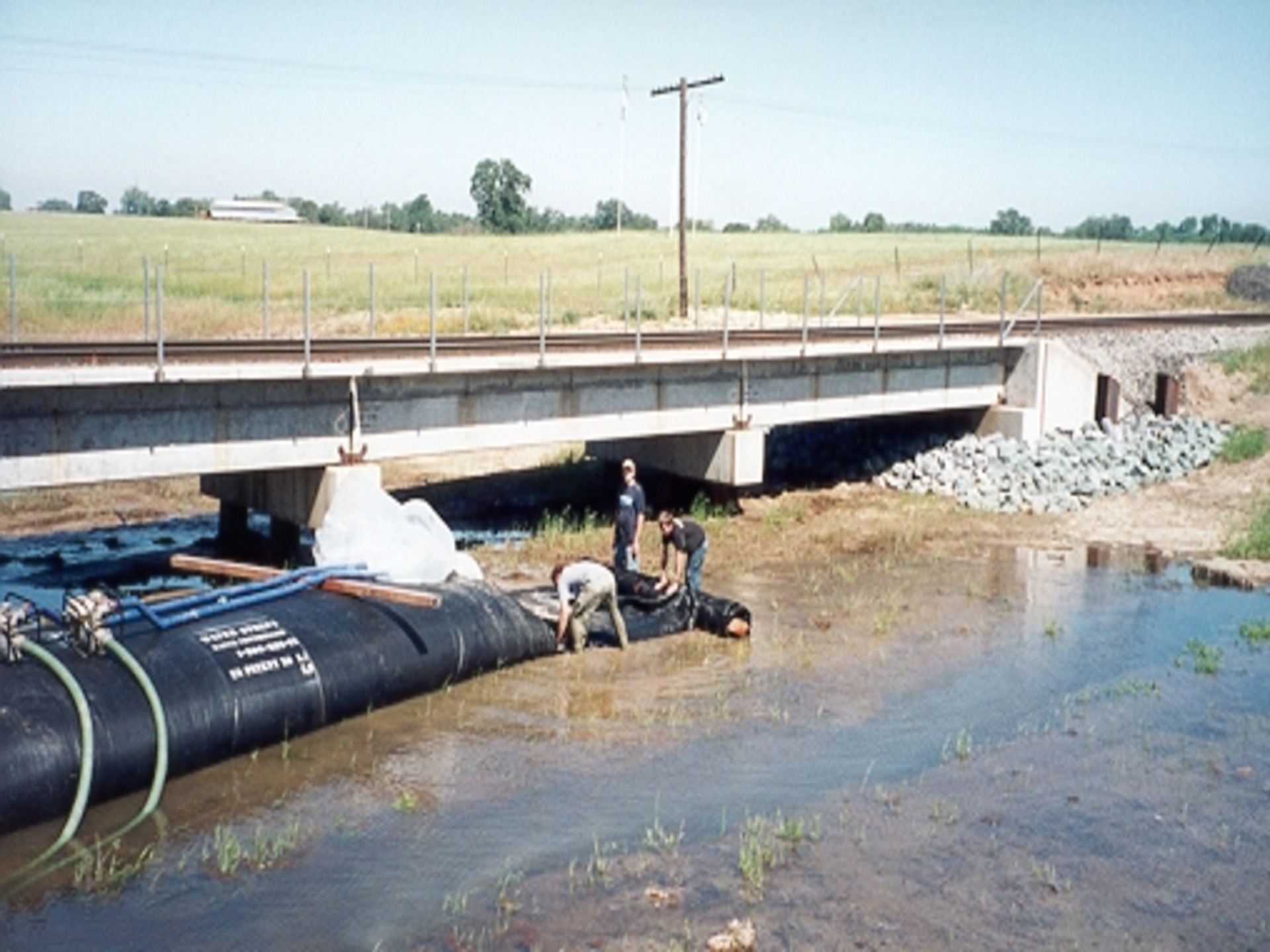
Once the connection collar was unrolled, two holes were cut into it at the top of the closed end of the first AquaDam. The fill-tubes of the second AquaDam were pulled through these holes, and its open end was laid over the closed end of the first AquaDam, positioned within the collar.

The closed end of the first AquaDam acts as a starting bank for the second, and the connection collar holds both units together. Discharge hoses are inserted into the fill-tubes and extend through the collar down the closed end. As water is pumped in, the AquaDam begins to unroll due to the internal pressure.

The unrolling of the AquaDam is managed by workers positioned behind the roll, along with another worker operating the pumps. Although this is a low-flow creek, it is essential to maintain pressure (head) inside the AquaDam as it is deployed in the flowing water. Do you see the connection collar extending from the end of the first AquaDam?

The second 4ft tall, 100ft long SCE AquaDam has been installed and filled. Like the first, this unit includes a connection collar, identifiable by the extra material at its closed end.
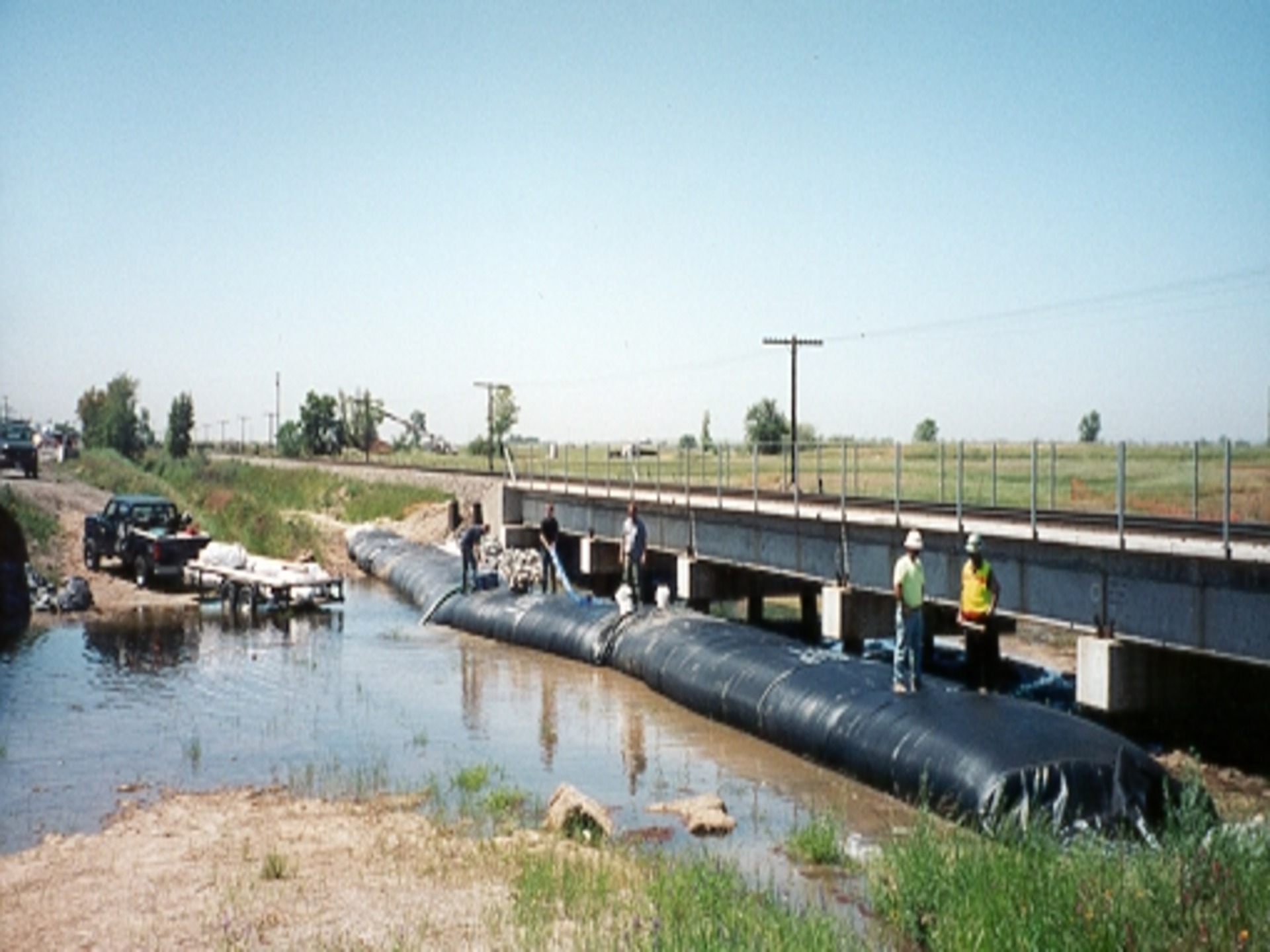
Can you tell how deep the water is now, compared to the earlier? The fill-tubes of both AquaDams have been tied off and secured to prevent backflow.
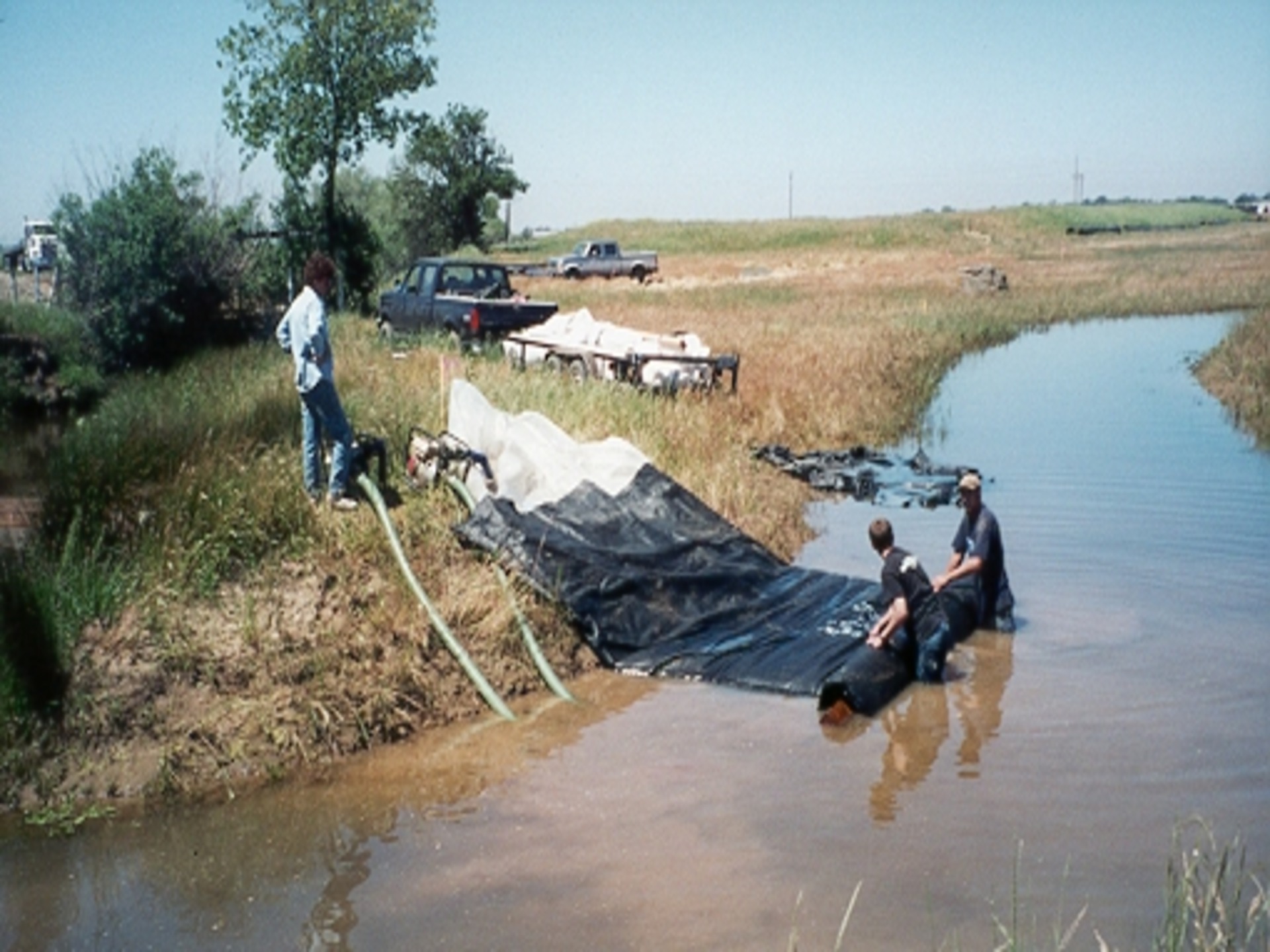
Workers are currently installing the third SCE AquaDam, 4ft tall by 50ft long, at the downstream end of the work area. Notice how high the open end and fill-tubes have been pulled up along the starting bank.
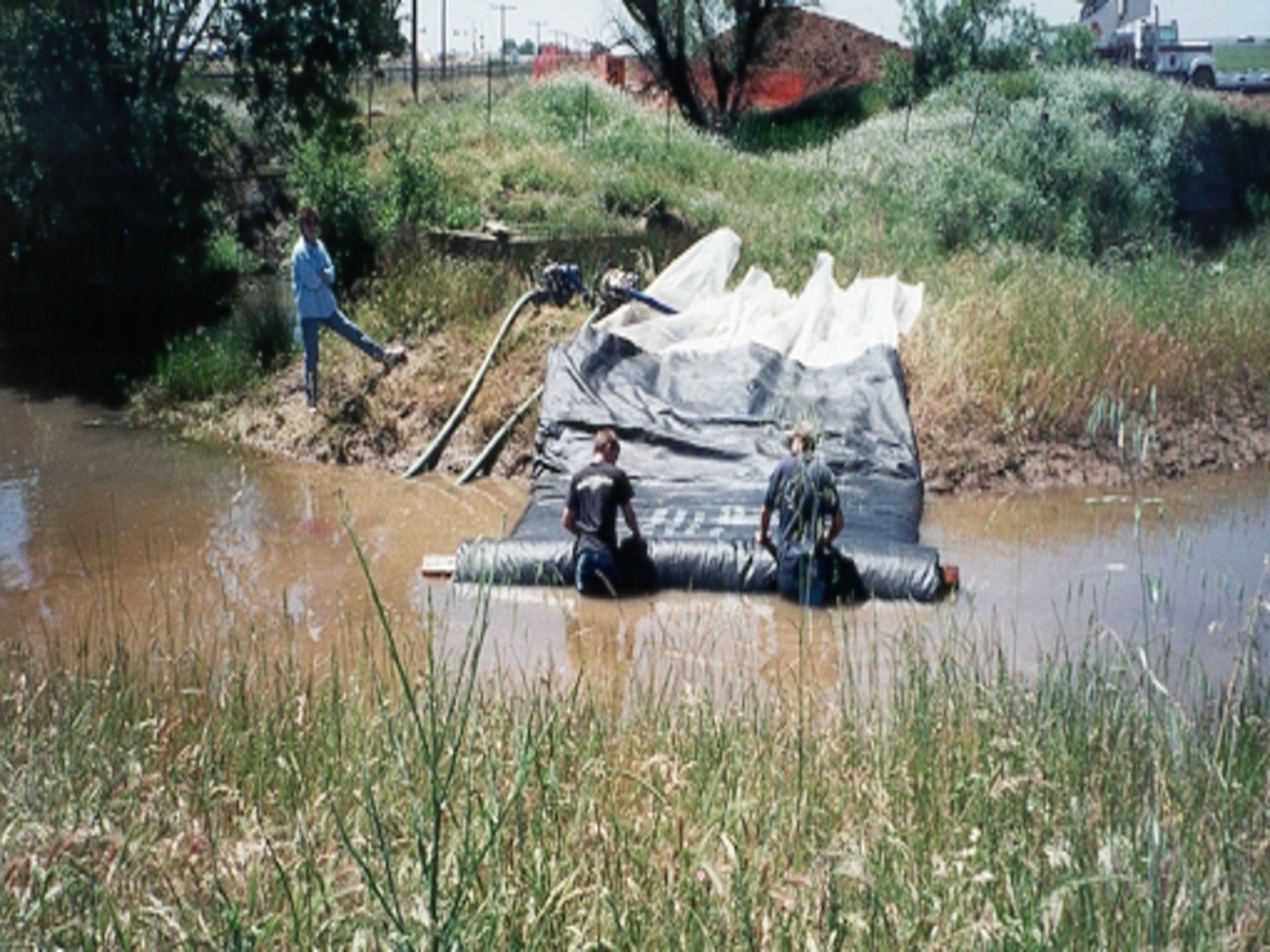
Even in calm, low-flow conditions, it is recommended to maintain sufficient water head within the AquaDam throughout the entire installation process.
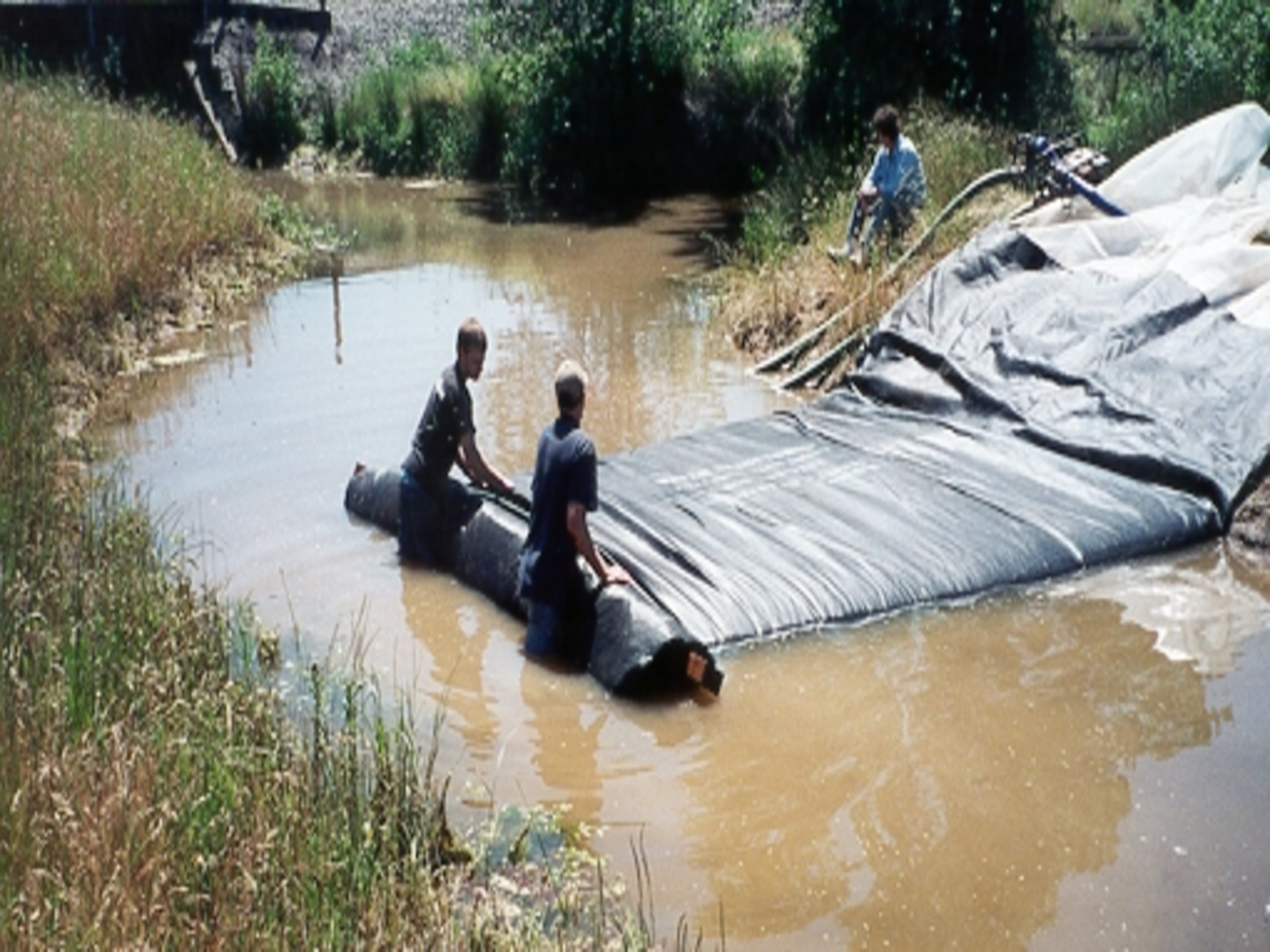
The installation process of filling the 50ft long AquaDam took approximately 20 minutes using two 3-inch water pumps. It is crucial to maintain a higher head inside the AquaDam compared to the surrounding water level. It is imperative to proceed with caution and avoid rushing through the installation process. Underestimating the forces of the surrounding water can lead to potential risks and complications.
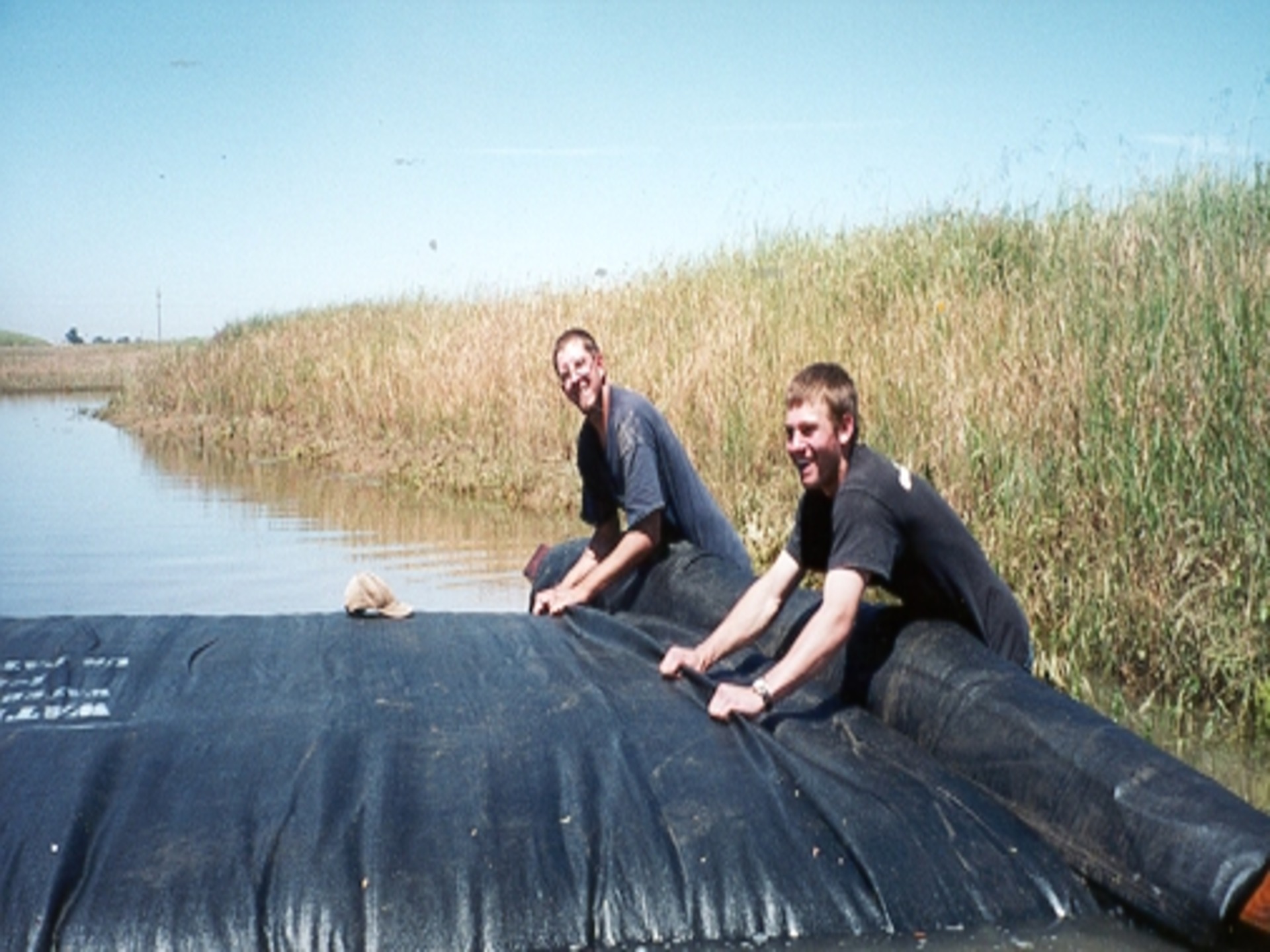
The workers are in a good position to hold back the roll as the water pressure inside the AquaDam continues to build and the unit fills.
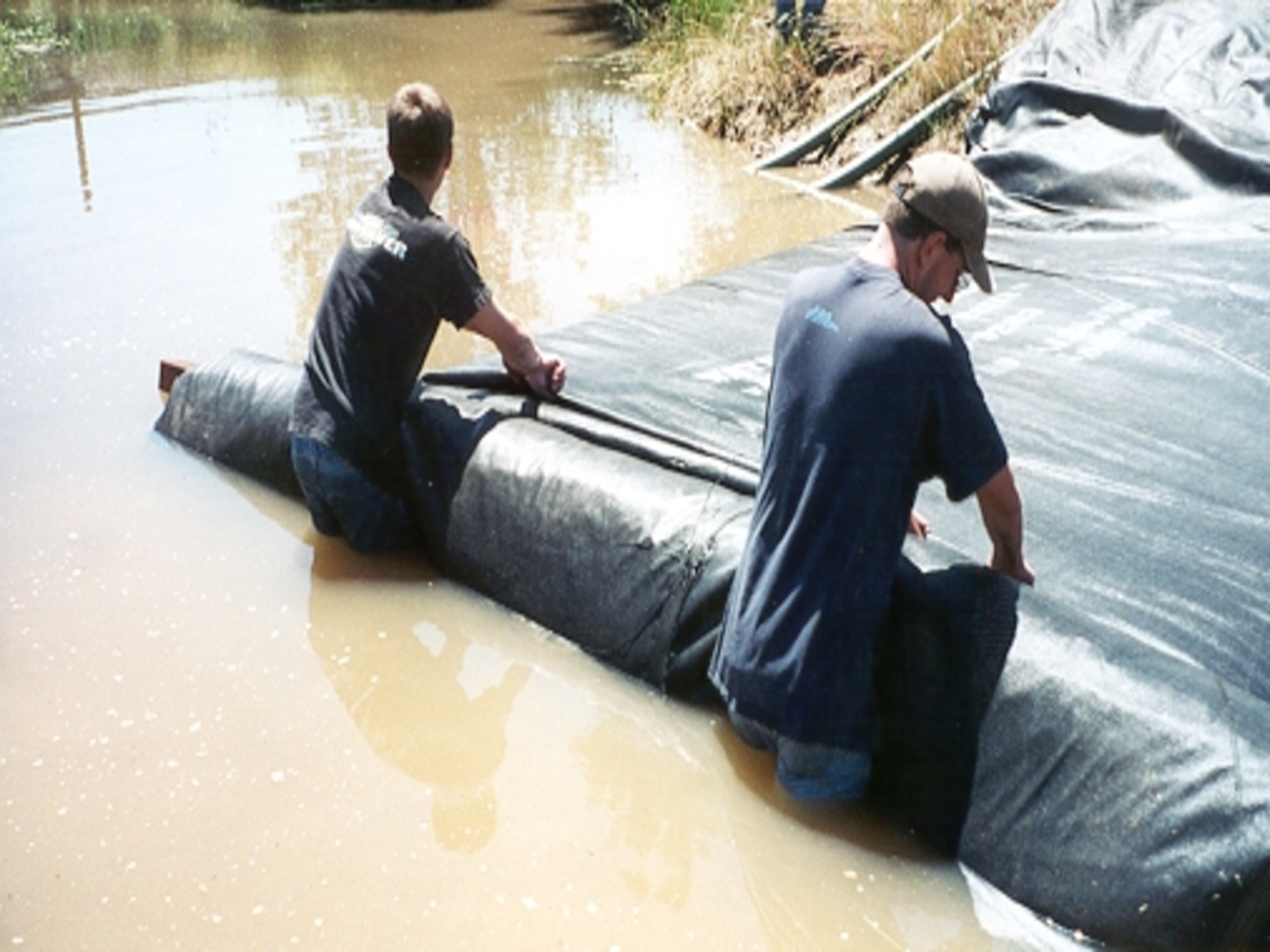
Once the unrolled portion of the AquaDam has built up several inches of head above the surrounding water, workers release a few feet of the roll to extend the dam. They then secure the roll again, repeating this step-by-step process until the AquaDam reaches the opposite bank.
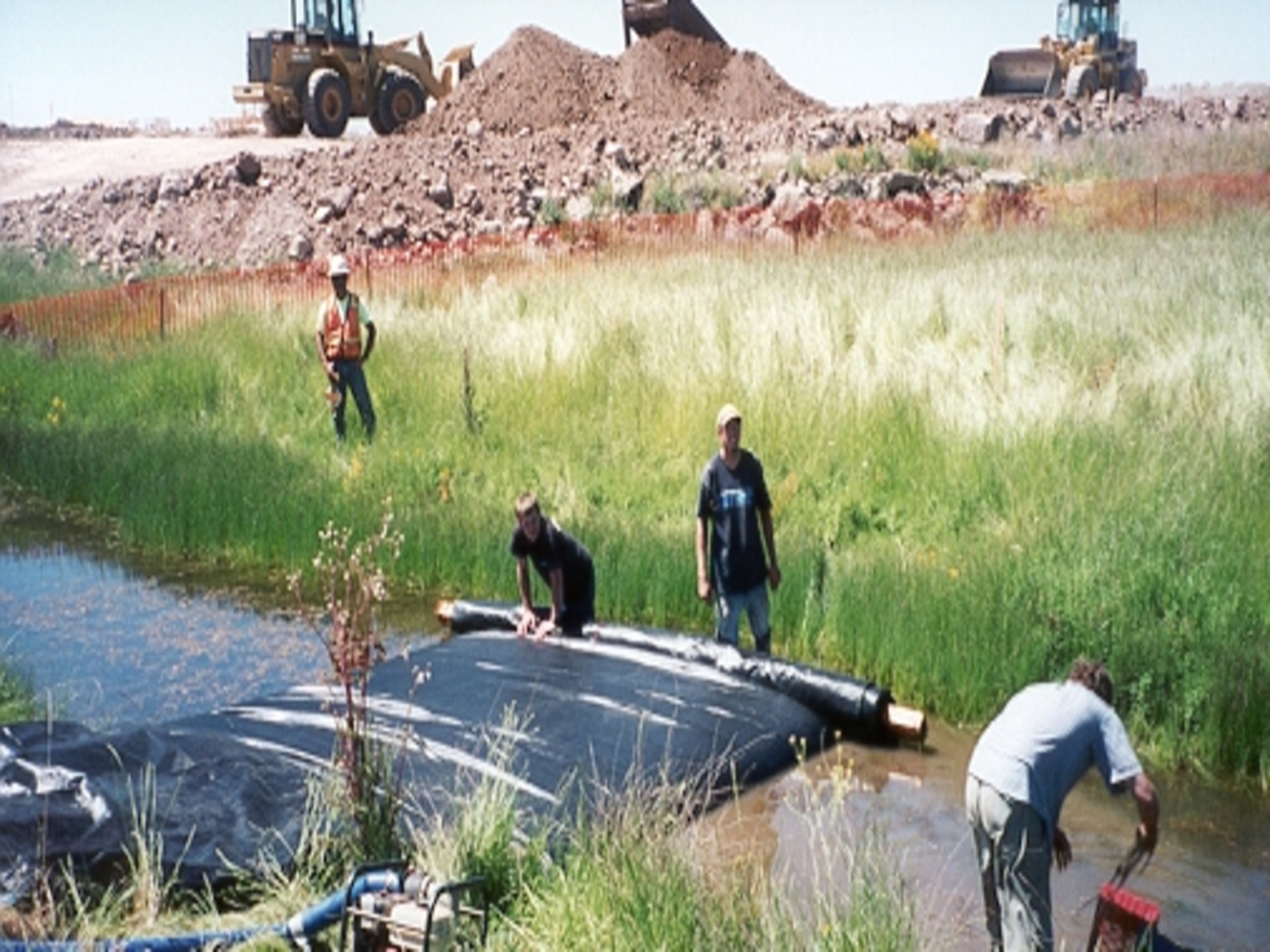
The 50ft long SCE AquaDam now extends nearly all the way across the creek and still requires additional water to complete the filling process. As internal water pressure increases, the end of the dam will naturally roll up the grassy bank on its own.
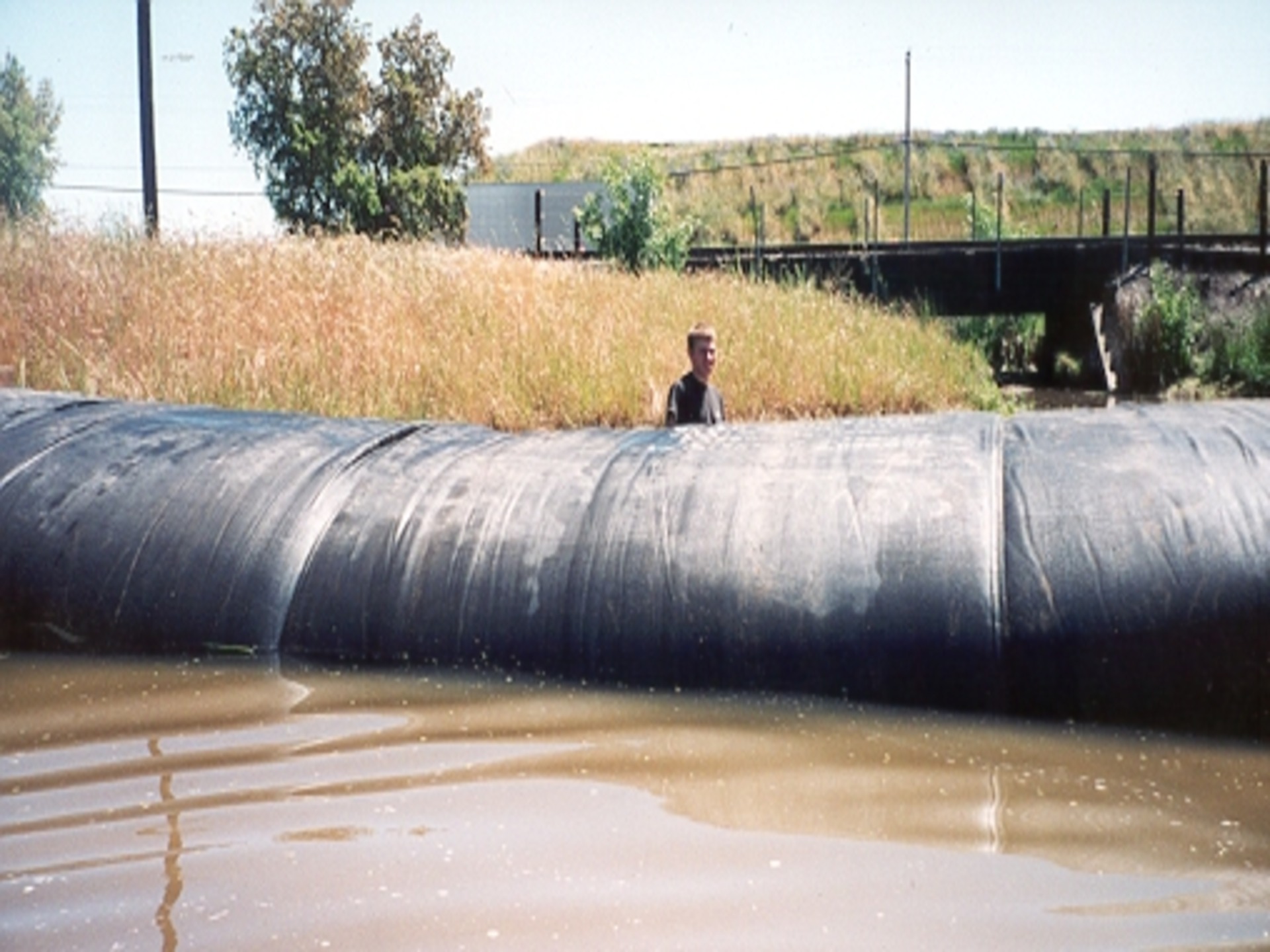
The third AquaDam is now fully filled and stand at a height of 4ft.

Now that the third 4ft tall AquaDam is completely filled, its fill-tubes have been securely tied to prevent any water from draining out. Workers can now proceed to de-water the work area, all while preserving the surrounding soil and vegetation with minimal disturbance.
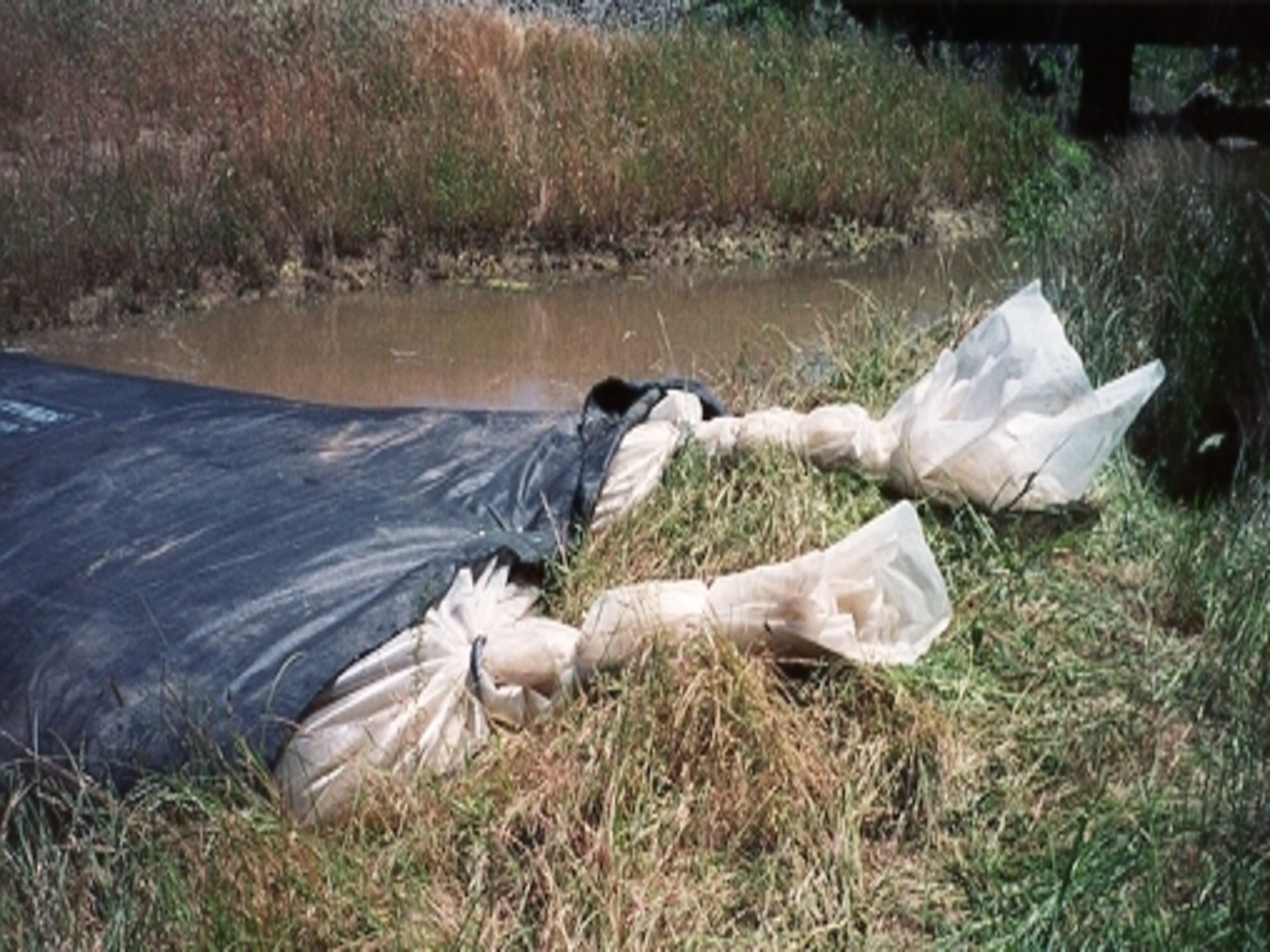
A close-up view of the secured fill-tubes. Properly tying off the fill-tubes prevents water from draining out of the AquaDam, ensuring it maintains internal pressure.

Fantastic job AquaDam!





